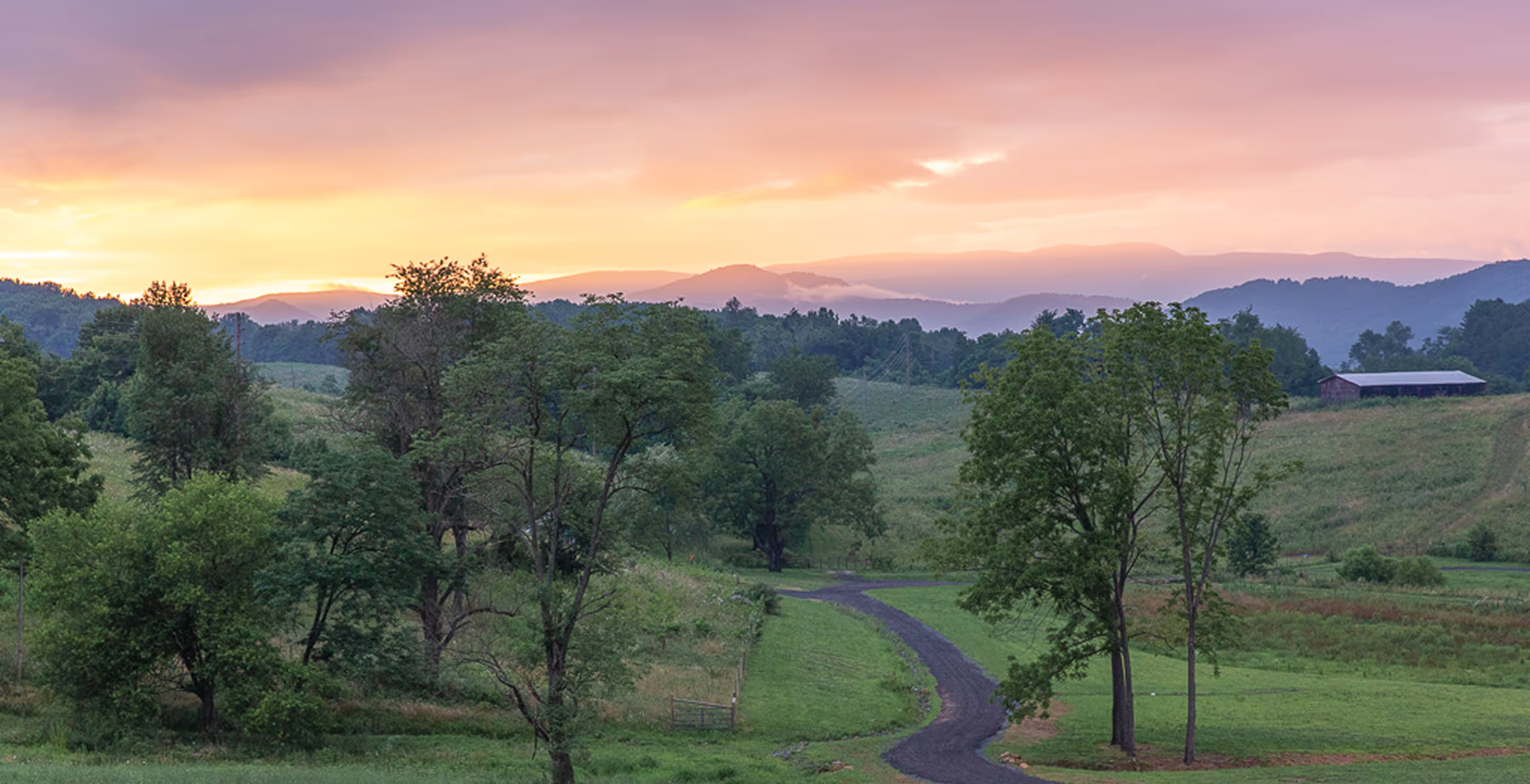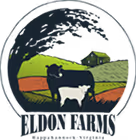Profitable Practices for Rappahannock Land
Work with your land, not against it. Discover practical, proven ways to lower costs, improve soil and herd health, and ensure your farm thrives for the long haul.
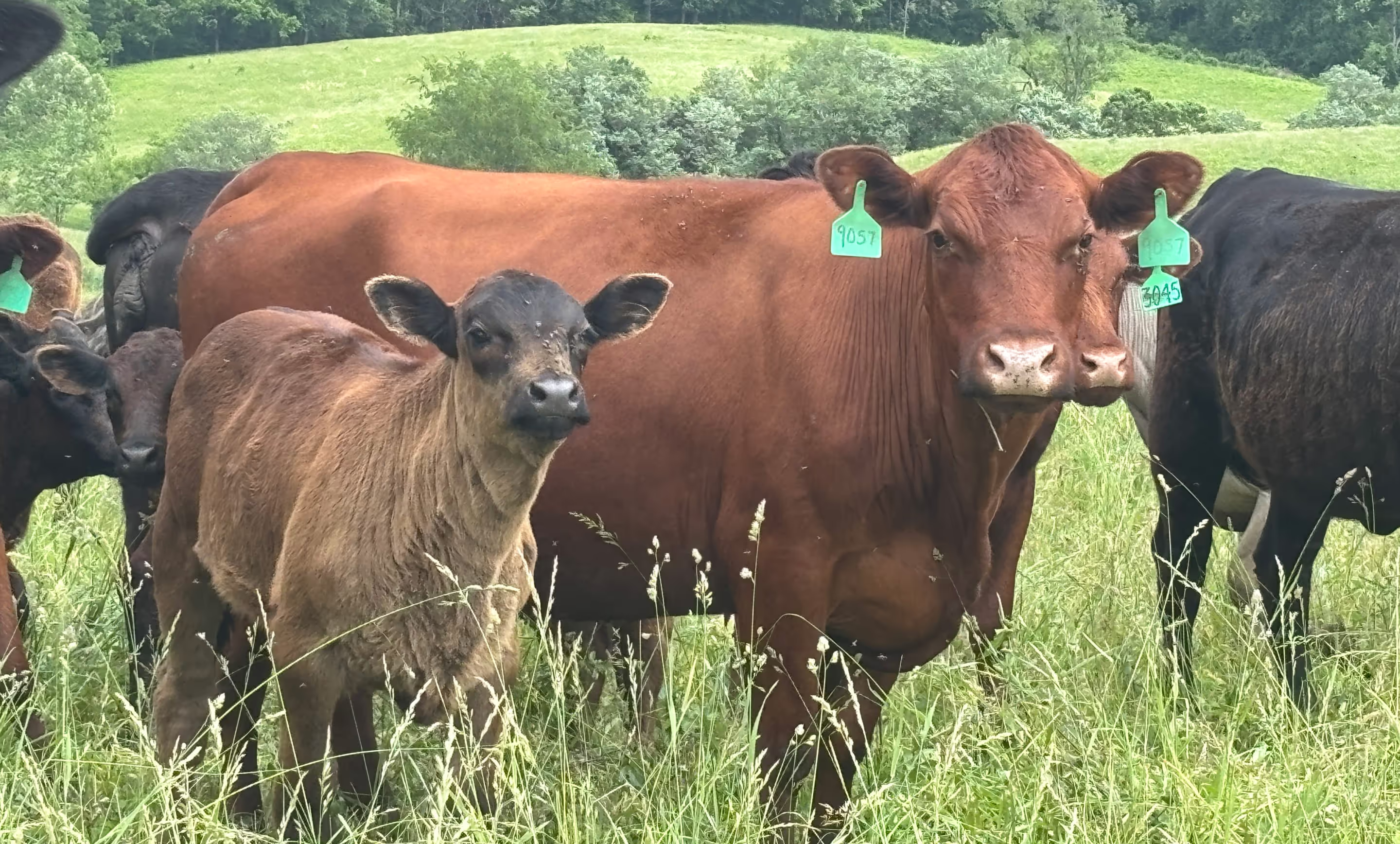
Lower Input Costs
Reduce reliance on expensive fertilizers, supplemental feed, and fuel.


Lower Input Costs
Reduce reliance on expensive fertilizers, supplemental feed, and fuel.

Improve Land Health
Build richer soil that holds more water and grows better forage.

Boost Herd Health
Raise healthier, more productive livestock on nutrient-dense pastures.

Increase Resilience
Create an operation less vulnerable to market volatility and extreme weather.

Enhance Ecology
See cleaner water and more wildlife return as natural co-benefits.
Cut Winter Feeding Costs & Effort
Conventional winter feeding – cutting, moving, stacking, then feeding out hay – burns fuel, takes time, and concentrates manure in sacrifice areas, wasting valuable nutrients.
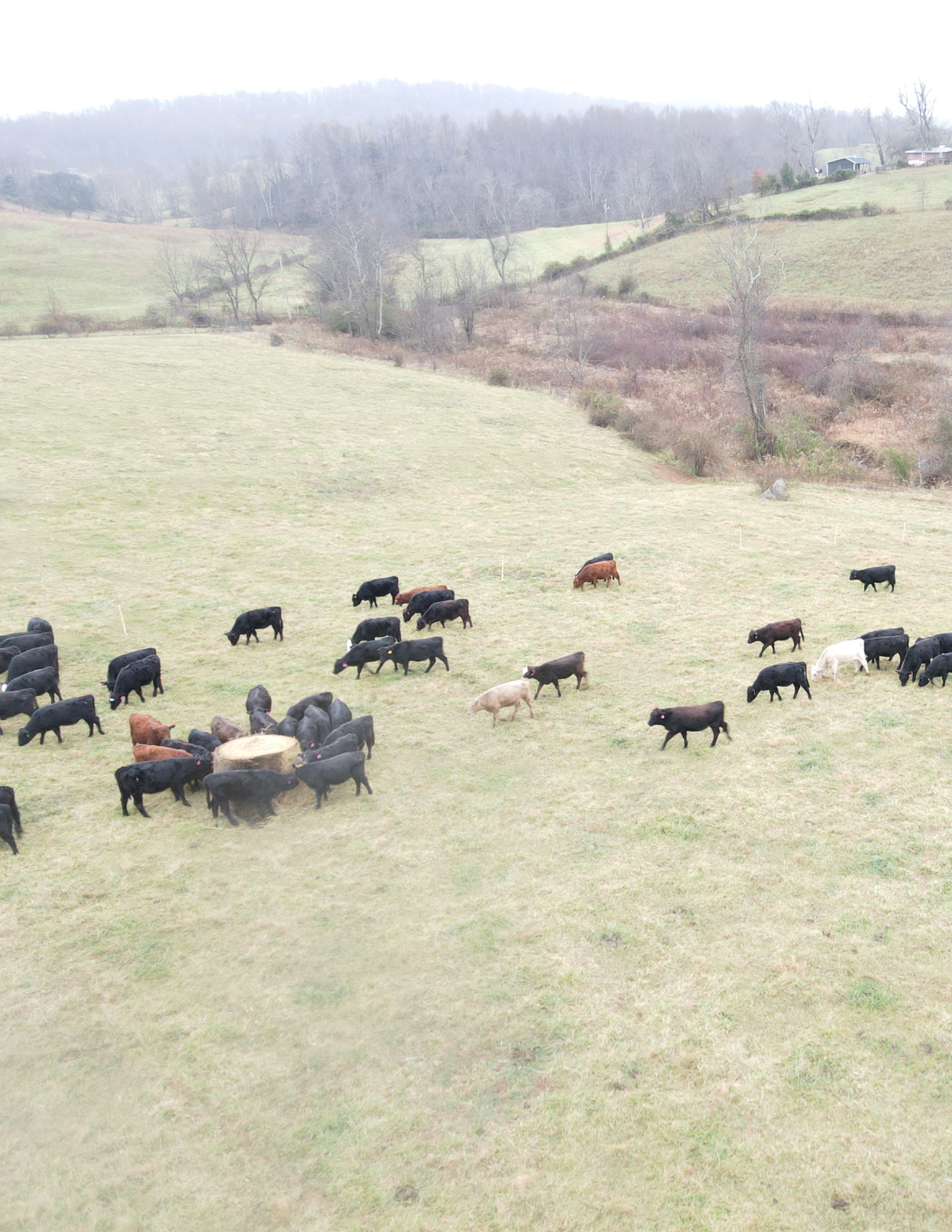
We simplify winter feeding drastically. Hay is cut and baled in the pasture during the growing season and left there. Come winter, we use temporary electric fencing (polywire) to give cattle access to a few bales at a time, along with stockpiled grass in the same field.
Timing the hay cut (aiming for early July or later) allows warm-season grasses to set seed and provides better stockpiled forage alongside the bales. Using biodegradable twine makes cleanup minimal. This system shows potential to significantly increase carrying capacity with minimal added expense.
We’ve nearly halved winter feeding time. No more daily hauling — just rotate fence lines and let the cattle feed themselves.
As cattle graze, they spread manure evenly across the pasture. It enriches the soil and reduces your need for synthetic fertilizers.
Grazing in place means less trampling and mud. Leftover hay builds organic matter and supports healthier spring growth.
Easily adaptable to different field layouts and herd sizes using simple temporary fencing.
Grow More Grass, Healthier Cattle
Continuous grazing or slow rotations often lead to overgrazed preferred plants, underutilized less palatable ones, and compacted soil, ultimately reducing overall pasture productivity and health.

We manage grazing dynamically based on forage growth, not just the calendar. Cattle are moved frequently – typically every 3-5 days – through smaller paddocks using a combination of permanent and temporary fencing. This allows grazed plants a longer, crucial rest period to fully recover root reserves and regrow before being grazed again.
Flexibility is key – rotation speed changes based on season and rainfall. Larger herds moved quickly create more uniform impact. Matching stocking rate to true carrying capacity prevents overgrazing during dry spells.
Our measurements show well-managed rotational grazing can yield up to 30% more usable forage per acre compared to slower rotations or continuous grazing on the same land with the same inputs.
Cattle get consistent access to higher-quality, more nutritious forage, leading to better weight gain and overall health. Trampling is distributed, improving nutrient cycling.
Longer rest periods allow deeper root growth, improving water infiltration and drought resilience. Better ground cover protects the soil surface.
This system mimics natural grazing patterns, creating diverse grass heights that benefit ground-nesting birds and other wildlife, while healthier soil sequesters more carbon.
The Foundation of a Profitable, Resilient Farm
Simply looking at a pasture doesn't tell you if the soil underneath is truly alive and functioning well. Conventional soil tests often focus only on basic nutrients (N-P-K), missing the critical biological component that drives long-term fertility and resilience.

We go beyond basic nutrient testing. We annually track Soil Test Biological Activity (STBA) across all 47 pastures using standardized field tests (like Solvita). This measures the respiration of soil microbes – a key indicator of how alive and functional the soil ecosystem is, and how well it's cycling nutrients and storing carbon. We correlate these results with our grazing management and other practices.
Grazing management has a direct, measurable impact on soil life. Practices like bale grazing and adaptive rotation show positive trends in STBA. Dedicated test plots are helping us isolate the effects of different management choices (like mowing timing vs. grazing).
Understanding soil biology helps us fine-tune grazing intensity, rest periods, and winter feeding strategies to actively build soil health, not just maintain it.
Biologically active soil cycles nutrients more effectively, meaning plants can access existing soil fertility, reducing reliance on costly purchased inputs over time.
Healthy soil structure, rich in organic matter fostered by microbial life, holds significantly more water, making pastures less vulnerable during dry periods.
Living soil is carbon-rich soil. Practices that boost biological activity help draw down atmospheric carbon and store it long-term underground.
Clean Streams & Working Farms Can Coexist
Conventional practice often demands expensive permanent fencing to fully exclude cattle from streams to protect water quality. This is often costly, inflexible for farm management, prone to flood damage, and can hinder access to vital water sources.
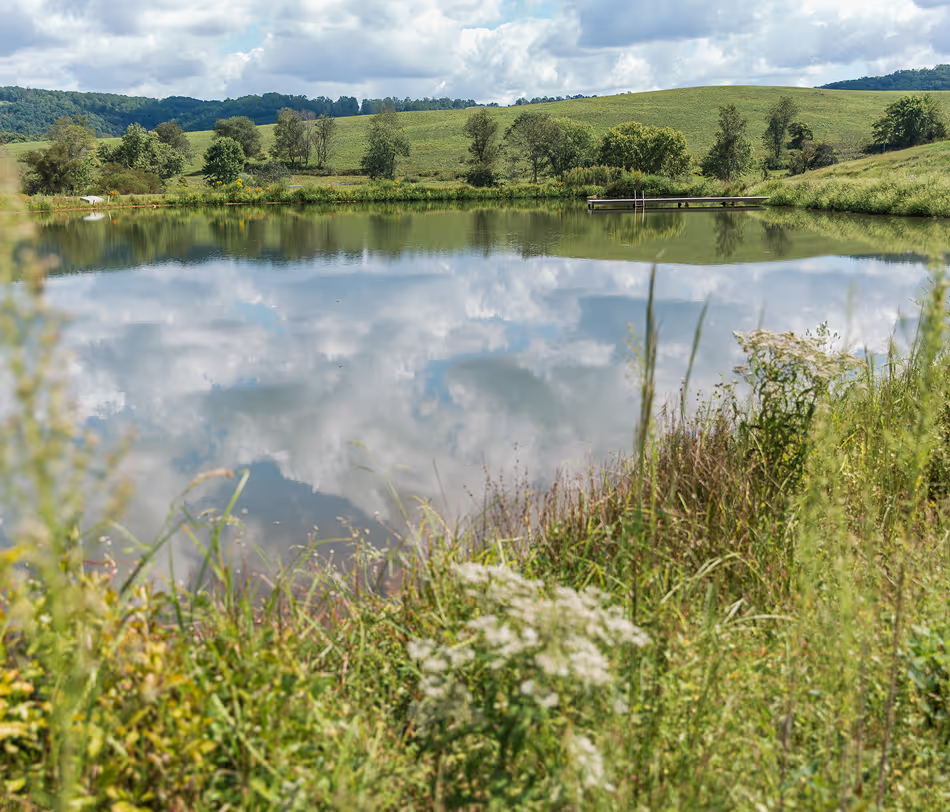
Our regular water testing revealed a key insight: water quality issues (like E. coli spikes) primarily occur when cattle lounge in streams during hot summer months. Based on this data, we use a practical, targeted approach. We utilize temporary electric fencing (polywire) to exclude cattle from main stream banks only during the warmer season (April 15 - October 15), while allowing controlled access at hardened crossings for drinking. During cooler months, cattle have full access.
Targeted, data-informed management can achieve conservation goals more efficiently and affordably than one-size-fits-all regulations. Understanding the timing of impacts is crucial.
Monthly E. coli testing confirms this seasonal exclusion strategy effectively maintains excellent downstream water quality, comparable to permanently fenced areas.
Avoids the immense capital cost and maintenance headaches of permanent fencing and complex watering systems. Fences can be easily moved or removed for riparian area management (like invasive control).
Ensures cattle can still reach necessary water sources throughout the year, particularly vital during winter. This removes the need for watering systems requiring high monetary and fuel costs.
Integrates smoothly with rotational grazing plans without creating significant management barriers.
Start building resilience on your farm today
You don't need to overhaul everything at once. Small, incremental changes based on observation can make a big difference. Consider trying one of these steps:
Try Rotational Grazing on One Paddock
Divide one pasture with temporary fencing and move animals more frequently. Observe the forage regrowth compared to other fields.
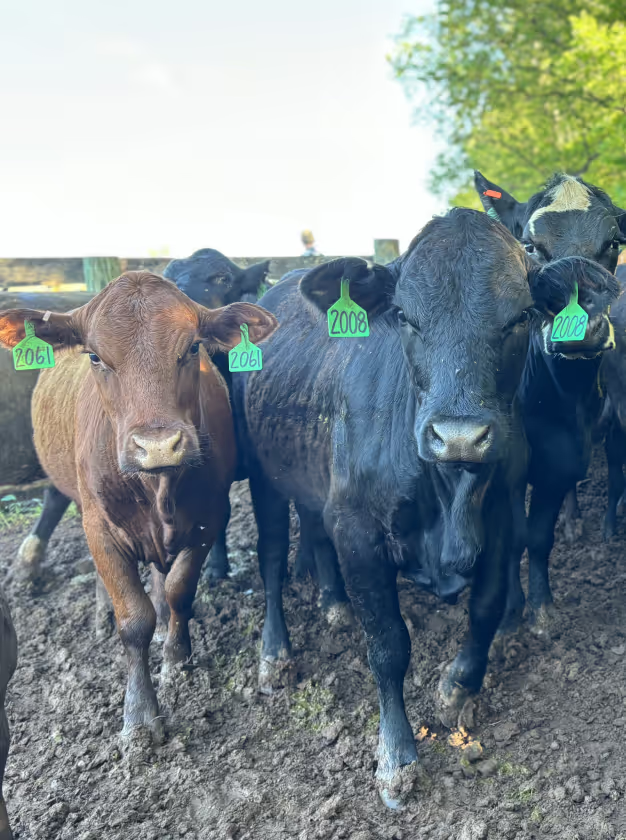
Experiment with Bale Grazing
Leave round bales in one field after cutting this summer. Plan to graze that field this winter using temporary polywire to control access to bales.

Get a Soil Health Test
Go beyond standard N-P-K. Ask your extension agent or testing lab about biological activity tests (like Solvita/STBA) to understand your soil's life.
Observe Your Streams
Note when and where cattle spend time in creeks. Could temporary fencing during summer keep them out of sensitive areas while maintaining access points?
Common questions about our approach
Is this affordable for a smaller farm? Won't these changes cost a lot?
Many of these practices reduce costs. Bale grazing cuts fuel and labor. Better rotational grazing reduces hay needs. Temporary fencing is far cheaper than permanent. We focus on ROI and practical steps, not expensive overhauls.
Does 'sustainable' or 'conservation-minded' farming mean lower production?
Not in our experience. Healthier soil grows more, better forage. Healthier cattle gain better. Reducing input costs improves the bottom line. It's about working smarter with natural systems, which often leads to more resilient and productive operations long-term.
How much extra time does managing rotational grazing or temporary fencing take?
There's a learning curve, but temporary fencing (like polywire and step-in posts) is quick to move once you have a system. The time saved on things like winter feeding (with bale grazing) or treating sick animals (due to better nutrition) often outweighs the time spent moving fences.
I feel overwhelmed. Where's the best place to start?
Start small and simple. Pick the one initiative that seems most appealing or addresses your biggest challenge right now (e.g., high winter feed costs -> try bale grazing). Observe results in one area before expanding. We're here to share what we're learning. Contact Us
Ready to Farm with More Profit and Less Worry?
Explore resources, join us for an upcoming event, or get in touch to discuss how these practices might fit your Rappahannock farm.
